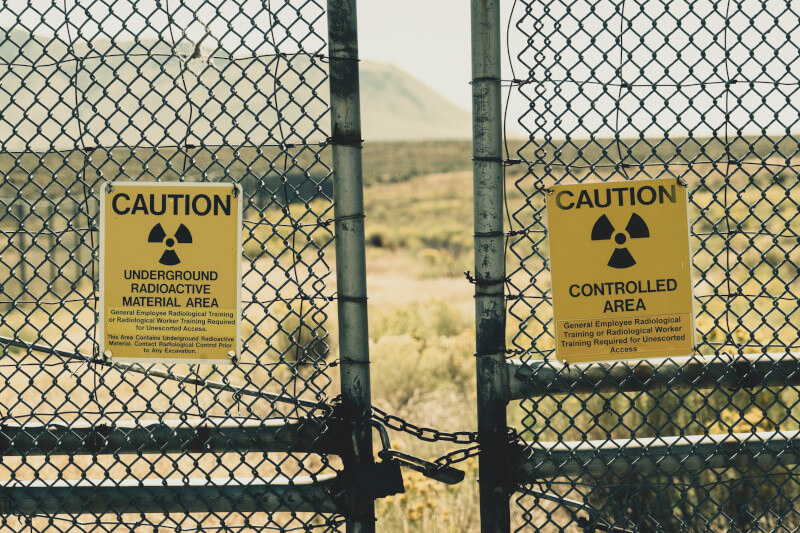For millennia, humanity has been extracting and harnessing the power of lead. As far back as 6500 BCE in Anatolia, the first known lead mine began operations. Yet, our ancestors in places like Greece recognized its detrimental effects on our health long before modern science caught up. The illustrious Greek physician Nicander of Colophon, in his seminal work “Alexipharmaca,” described the perilous impact of lead, dubbing it as “deadly.”
The astute observations of another Greek physician, Pedanius Dioscorides, highlighted lead’s potential to weaken the mind in the first century AD. The Occupational Safety and Health Research Institute acknowledges that “Lead poisoning stands as one of the earliest detected occupational hazards,” with its devastating outcomes echoing since antiquity.
So, What Makes Lead So Insidiously Toxic?
The ramifications of lead poisoning span from minor ailments like constipation to alarming, lifelong cognitive decline. The spectrum of repercussions is vast: compromised fertility, hampered growth in children, spontaneous miscarriages, and even unpredictable mood alterations.
You might wonder, if we can safely consume metals like iron – vital for our survival, what makes lead so vicious? While researchers are still connecting the dots on lead’s full range of toxic effects, it’s clear that lead’s deception lies in its ability to displace vital minerals like zinc, calcium, and iron during crucial biochemical processes. This treacherous metal can replicate or even obstruct calcium’s role, particularly in neuronal activities, as explored in studies about the Mechanisms of Lead Neurotoxicity.
Beyond the Brain, Lead’s Havoc Doesn’t Stop
It sabotages heme synthesis and ruthlessly damages DNA and cellular membranes, resulting in ailments such as anemia. By impeding our body’s capacity to produce Vitamin D and disrupting bone metabolism, lead lays the foundation for a myriad of health challenges. And, if that wasn’t enough, lead’s influence extends to the immune system, leading to various complications.
The insidious nature of lead is further underscored by its ability to pervade our body swiftly, whether we breathe it in, ingest it, or, in rare instances, absorb it through our skin.
Taking a cue from modern health agencies like the CDC, which states, “No safe blood lead level has been identified,” we must remain vigilant. Lead’s prowess lies not in its functional utility within our body but in its persistence. With a half-life stretching from weeks in our bloodstream, to years lodged within our bones, it’s not about how lead functions – but how it endures.
Storing Lead
Fun Fact: Did you know that when you ingest lead, your body has a special way of managing it? Around 94% of ingested lead in adults finds its way to the skeleton, while for kids, about 70% of it ends up in both their bones and teeth. Now, you might be thinking, “Why bones?” Well, it’s a good thing! Lead is way more harmful when it’s roaming free in your blood and soft tissues. So, by locking most of it in the bones, your body is reducing its destructive potential. This little tidbit explains why children, with their developing bones and systems, are more at risk from the evils of lead poisoning.
Ancient Civilizations and The Lead Paradox
Fun Fact: Even though lead’s scary effects on our health were no secret to civilizations like the Greeks and Romans, they couldn’t resist its charms! Thanks to its ease of use, anti-corrosion properties, and impressive density, they kept coming back for more. The Romans, in particular, had a thing for lead, using it in their plumbing systems and even kitchenware. But here’s the twist: Julius Caesar’s chief engineer, Vitruvius, threw shade at lead pipes, proclaiming, “Water is much healthier from earthenware pipes!” Because, yup, you guessed it, lead-tainted water isn’t exactly a health tonic.
Historical Underestimation of Lead’s Harm
While lead has been a part of human history for thousands of years, its dangers were not fully understood or acknowledged by ancient civilizations. From Nicander of Colophon’s writings to the works of Pedanius Dioscorides, the harmful effects of lead were detailed. However, despite these early warnings, its utility in various applications overshadowed its known risks, especially among civilizations like the Greeks and Romans.
The Stealthy Symptoms of Lead Poisoning
Lead poisoning can manifest in a myriad of ways, making it a particularly treacherous condition. For some, symptoms may be as “mild” as constipation or mood swings. However, prolonged exposure or ingestion can lead to lifelong cognitive impairments, such as a decline in IQ and mental capacity. For children, whose brains and bodies are still developing, the dangers are amplified, resulting in possible stunted growth and other developmental issues.
Lead’s Deceptive Biochemical Role
Lead is especially hazardous because of its ability to insidiously disrupt the body’s natural processes. Unlike other metals like iron or zinc, which play vital roles in the human body, lead serves no functional purpose. Instead, it competes with these essential metals, interfering with crucial biochemical reactions. Lead has been known to mimic or inhibit the natural actions of calcium in the body, leading to decreased neural activity.
DNA and Cellular Damage
On a cellular level, lead is equally sinister. It is known to interfere with heme synthesis, which is vital for transporting oxygen in our blood and can cause damage to both DNA and cell membranes. This kind of cellular damage can lead to conditions like anemia and other health complications. Additionally, lead’s interference with vitamin D production can spark a cascade of other health issues.
Lead’s Persistence in the Body
What makes lead even more concerning is its persistence once it enters the body. While certain toxins can be swiftly excreted or metabolized, lead is not so easily ousted. It can spread throughout the body, affecting various organs and systems. The fact that no safe blood lead level has been identified underscores its toxicity. In the body, lead can last for weeks in the blood, months in soft tissues, and even decades in bones, continually posing health risks.
The Silent Culprit
Despite its known dangers, lead’s widespread use in ancient civilizations, particularly in Rome, speaks to its valued properties. Its resistance to corrosion and high density made it a popular choice for plumbing and kitchenware, even though the health risks of lead-contaminated water were recognized. This historical dichotomy between lead’s utility and its toxic legacy serves as a cautionary tale for modern times.
Understanding the Risks of Lead Poisoning
You must know that lead poisoning, while serious, can be managed with prompt attention. If you suspect you’ve been exposed to high levels of lead, consider the following steps and tips to ensure your safety and well-being.
Recognize the Symptoms
Before diving into treatments, it’s essential to know if you’re indeed at risk. The symptoms of lead poisoning can range from fatigue, mood swings, headaches, and abdominal pain, to more severe conditions like anemia and cognitive difficulties. If you or someone you know exhibits these signs after a potential exposure, take them seriously.
Seek Medical Attention Immediately
Once you suspect lead poisoning, your immediate step should be to consult a healthcare professional. They can order a blood test to determine the amount of lead in your bloodstream. Remember, there is no safe level of lead in the blood, so even minute traces should be addressed.
Home Safety Evaluation
If you suspect that your home may be the source of lead exposure, especially if it was built before 1978, consider hiring a certified lead inspector to check for risks. This will help you identify and eliminate sources of lead like paint, pipes, or even soil.
Enhance Your Diet
While this doesn’t eliminate lead from your system, certain foods can help counteract the absorption of lead. Boost your intake of calcium, iron, and vitamin C-rich foods. These nutrients can limit the amount of lead your body absorbs. Include foods like oranges, tomatoes, dairy products, beans, and lean meats in your meals.
Stay Hydrated
Drinking plenty of water can help in flushing out toxins, including some amount of lead, from your system. Ensure you drink from a trusted water source that’s free of contaminants.
FAQs on Handling Lead Poisoning
Q: I’ve just found out there’s lead in my water supply. What should I do?
A: First, stop consuming or using the water. Invest in certified water filters that are known to remove lead. In the long term, consider replacing lead-containing plumbing in your home.
Q: Can lead poisoning be cured?
A: While there’s no “cure” for lead poisoning, treatments can help reduce the amount of lead in the blood. Chelation therapy and EDTA therapy are potential treatments for severe cases but always consult with a healthcare professional.
Q: How can I prevent lead poisoning in the future?
A: Stay informed about potential sources of lead in your environment, like old paint or contaminated water sources. Regularly check your household items and surroundings for risks, and consider periodic blood tests, especially for children, to ensure safety.




